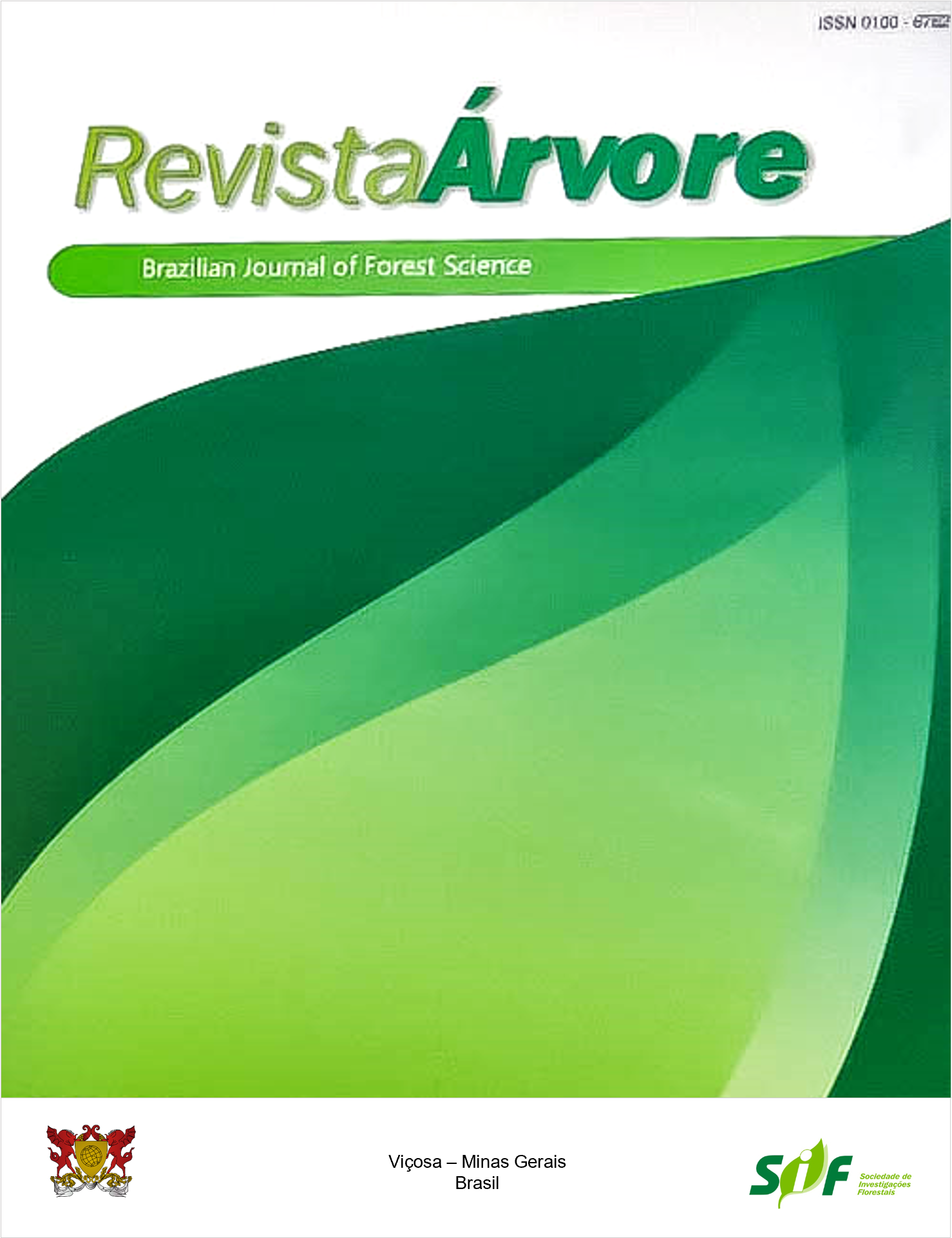EFFECT OF THINNING ON VOLUMES OF BIOMASS AND BARK TANNINS CONTENT OF Mimosa caesalpiniifolia BENTH. TREES
Keywords:
Secondary metabolites, dry forests, silvicultural practicesAbstract
This research aimed to evaluate the effect of thinning on the wood volumes per hectare on the tannin content in the bark of Mimosa caesalpiniifolia. The planting was subdivided into two plots, one thinned at 12 and 55 months of age (T1), while the other plot was kept intact (T2). The dendrometric variables were measured, and ten trees were felled, five in each plot. Subsequently, wood and bark’s volume, mass, and moisture content were determined. Then, the total solids content (TST), the Stiasny index (I), and the condensed tannin content (TTC) were quantified. Dry wood productivity was statistically different between the two treatments, with values of 26.7 and 22.8 t ha-1 for T1 and T2, respectively. The percentage of dry bark corresponded to 16% of the total biomass for both treatments. The only variable that showed a significant difference was I, with values with and without thinning, 59.83 and 79.31%, respectively. Therefore, it was verified that the way the thinning was used changed the I and how they were conducted, favoring the emission of boles and increasing the frequency in the lower diametric classes instead of favoring the increase in DBH. It is concluded that thinning interferes with the biomass volumes and the Stiasny index of M. caesalpiniifolia. However, it does not alter the concentration of tannins present in the species’ bark.
Keywords: Secondary metabolites; Dry forests; Silvicultural practices
Downloads
Published
How to Cite
Issue
Section
License
All authors agreed to submit the work to Revista Árvore and granted the exclusive license to publish the article. The authors affirm that it is an original work and has not been previously published elsewhere. The scientific content and opinions expressed in the article are the sole responsibility of the authors and reflect their opinions, not necessarily representing the opinions of the editorial board of Revista Árvore or of the Society of Forest Investigations (SIF).




